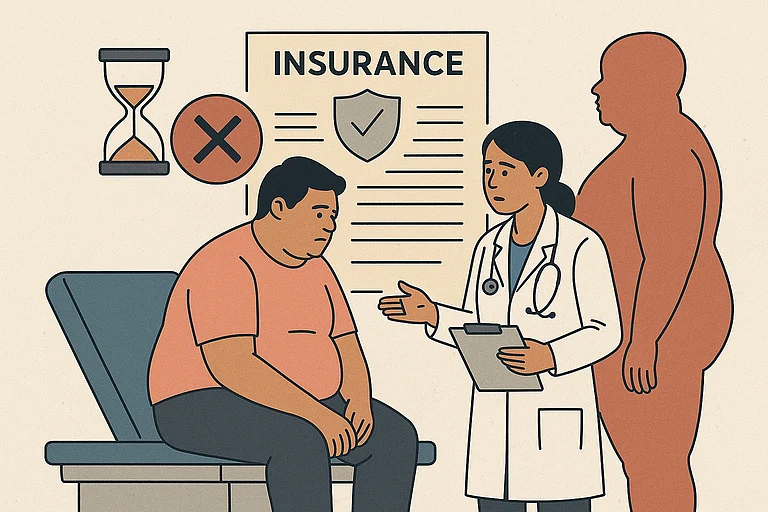Senior citizens or older adults in India have to travel as long as 44 kilometres on average to get in-patient healthcare services. According to The Lancet Regional Health - Southeast Asia 2025 study, physical distance from hospitals and medical facilities directly impacts the ‘healthcare utilisation and health-seeking behaviour in older adults in India’.
India is now the world’s most populated country with around 1.46 billion people. The demography is also changing and the number of older adults is slowly increasing. The report mentions that the elderly population in India, which was 7.4 per cent of the total population in 2001 is projected to increase to 13.2 per cent by 2031.
This number brings attention to the growing needs of this segment, where healthcare certainly is one of the top needs. But, if access to healthcare is restricted for any reason, it can result in uncalled-for outcomes.
The report highlights that it is not always the financial reason that people do not access healthcare facilities. The distance from the facility is also a significant reason, which probably has so far not been given the attention it deserves. It emphasises the increasing need for medical care in old age and why systemic change is required.
Does Physical Distance Matters In Accessing Healthcare?
The study used the Longitudinal Ageing Study of India (LASI) (Wave-1, 2017–18) conducted over 31,902 older adults for their research. It analysed the data about the distance these adults travelled for their different medical needs and have been able to utilise the facilities.
The findings reveal that distance matters considerably in accessing and availing of healthcare facilities.
Key Findings:
Older adults travelled an average of 14.54 kilometres (km) to receive out-patient healthcare services, whereas for availing in-patient services they travelled around 44 km.
• Out-Patients Facility: The distances were lesser in urban areas compared to rural areas as around 67 per cent of older adults had the out-patient facility within 10 km reach, but for elderly in rural areas, it was 28.3 km away.
• In-Patient Facility: The disparity increases for in-patient services. As per the data, the rural elderly had to travel more and spend more time, almost two times higher than the urban elderly.
However, availing the ambulance remained around 5 per cent in both cases. Around 95 per cent relied on their own transport to reach the facility.
The study observes the connection between the distance and utilisation of services. It shows that utilisation was high when the distance was less than 10 km, but it declined when the distance increased.
Compared to the out-patient access at 73 per cent, the in-patient access was 40 per cent to access services available within 10 km.
For in-patient care, around 19 per cent of rural elderly and 10 per cent of urban elderly had to travel more than 60 km. For women, especially those living alone with less income and resources, the gap for accessing healthcare was higher.
Geographical Insights For Healthcare Access
Few states, such as Tripura, Manipur, and Kerala, had more in-patient and out-patient visits within 10 km, possibly due to better availability of services within this distance, whereas hilly states like Sikkim and Himachal Pradesh witnessed more visits to facilities beyond 61 km of distance. It indicates a lack of facilities in hilly areas.
In plains, like in Uttar Pradesh, Madhya Pradesh, and Bihar, the out-patient visits happened more within 11 to 60 km distance and in-patient visits to facilities more than 30 km away. Older adults in Jammu and Kashmir, Daman and Diu, and Lakshadweep also had to travel far distances to avail of healthcare.
Observation And Probable Solutions
The study underlines that distance plays a barrier for people, especially, older adults to access timely healthcare.
It offers some potential solutions, too.
Transportation: It suggests improvement in transportation so that older people can comfortably travel to the far-away facility. It can immensely help those living in remote and rural areas and the elderly in low-income groups.
A Shift From Clinic-Based Care To Home-Based Care: can be explored for people who cannot travel. For the home-bound elderly, home-based primary care through mobile medical vans or digital healthcare can help them access healthcare conveniently, suggests the study.
Primary Healthcare: The government runs Ayushman Arogya Mandirs, the centres which provide primary healthcare. The study suggests that these can be strengthened to provide comprehensive care to the geriatric population.
Secondary Health Care: In addition to this, secondary health care also needs to be improved. The district health system should be able to provide specialised care instead of referring patients to other hospitals.
Considering the growing elderly population, these measures might help older adults to conveniently and timely avail the necessary healthcare services, improve utilization of facilities equitably among rural and urban areas, and promote healthy longevity.


















